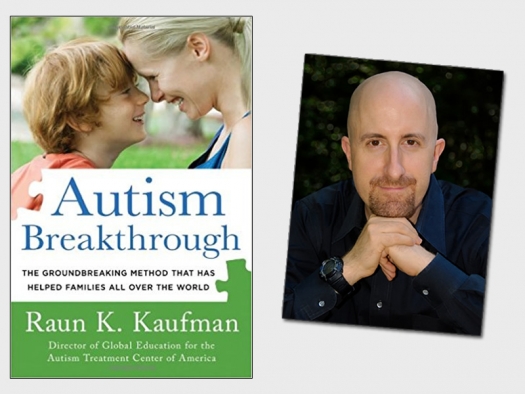Excerpt from Chapter 2 of "Autism Breakthrough: The Groundbreaking Method That Has Helped Families All Over the World"
AutismBreakthroughRaunKaufman.jpg

Autism Breakthrough: The Groundbreaking Method That Has Helped Families All Over the World by Raun K. Kaufman
Most of what parents are told about autism is not accurate or, unfortunately, helpful. Sure, whoever diagnosed your child may have told you the symptoms of autism and how your child’s behaviors matched those symptoms, but I’m not talking about symptoms. I’m talking about the central aspect of what autism is.
First, let’s talk about what autism is not. It is not a behavioral disorder. This is important because, 99 percent of the time, that’s exactly how it’s treated. The methodologies used on our children tend to focus on behavior change. Practitioners ask: how can we stamp out or eliminate this behavior and train the child to do that behavior?
The problem is, autism is not a behavioral disorder; it is a social-relational disorder. Do our kids behave differently? Sure. But those behaviors are symptoms, not causes. If you saw someone scratching his arm and then set as your goal the elimination of the scratching behavior, there are a number of approaches you might try. You might tell the person to stop scratching. You might threaten him with an unpleasant consequence if he continues scratching. You might try to distract him by putting something he wants (an ice-cream cone, for instance) in the hand he is using to scratch. You might even tie his arm to his body so that he couldn’t scratch.
Or you could actually look for the reason for his scratching and discover that he had a mosquito bite. Then, you could put some anti-itch cream on the bite. Voilà! No more scratching! And instead of not addressing the real issue while at the same time totally alienating the person, you solve the cause of the scratching—and the person is grateful!
This analogy illustrates the difference between trying to stamp out your child’s symptoms and addressing your child’s core challenge. Every autistic behavior your child exhibits is a symptom. Trying to extinguish these behaviors does not address the actual autism and only serves to seriously disrupt the trust and relationship between you and your child.
This trust and relationship is your most important asset in helping your child progress!
Why? Because autism is a social-relational disorder.
What does mean, exactly? Well, the primary challenge that your child has is a difficulty bonding and forming relationships with others. (I say “child” regardless of your child’s age because she is your child, even as an adult.) There are a few different reasons for this, which we will go over later, but, for now, know this: almost every other issue your child faces stems from this one challenge.
This is why, if you take a five-year-old nonverbal child labeled “severely autistic” and a sixteen-year-old adolescent with Asperger’s syndrome, you won’t, in most cases, find a single behavior in common. These two people will look and act very, very differently from one another. And yet, they are both on the autism spectrum. What do they have in common, then?
They both have difficulty communicating, making eye contact, reading nonverbal cues, dealing with people and social situations, coping with high levels of sensory stimulation, and being flexible with changing circumstances and with other people’s wishes and agendas. Also, they both have powerful interests (labeled by some as “obsessions”) that they can engage in for long periods of time, often seeming oblivious to the interests of others.
Isn’t that interesting? No behavior in common, yet a whole array of underlying challenges in common. So, regardless of where your child is on the spectrum, he or she has the same key deficits. This is actually a good thing. You may not see it as a good thing right this second. That’s okay. But, really, it is. It means that by addressing this one area, you are also tackling almost every other challenge that your child faces. It also means that everything in this book is designed to enable you to help your child grow and learn while going with instead of against your child, bonding more with your child instead of doing battle with him.
This leads us to a most important, paradoxically logical idea: overcoming autism is not about getting your child to change his behaviors. Really.


